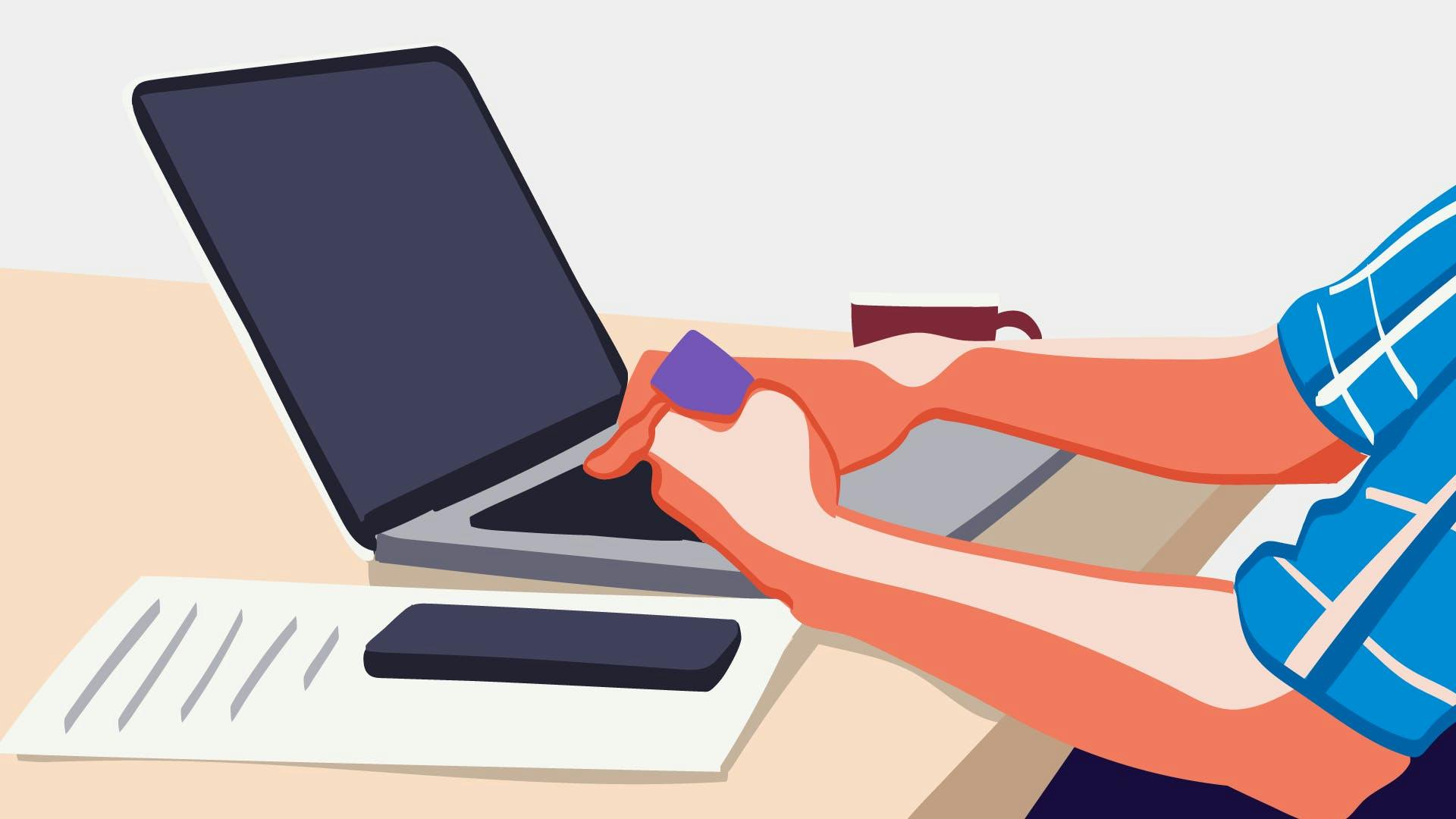Why has Germany been so slow to adopt digital banking?
Last updated on Feb 21, 2020
Mar 25, 2019
When I moved to Berlin earlier this year, I was staggered to find that the country, widely regarded as the powerhouse of Europe, is still years behind others in Europe when it comes to technological integration and digitisation.
Coming from London, where contactless and smartphone payments have become the most common method of purchase, I was left regularly open-mouthed when stores and restaurants would decline my debit cards; explaining, eyes rolling, that they (obviously) only accept cash. Even the metro ticket machines would decline my debit cards, resulting in a frustrated trip to the nearest ATM, which is always unusually far away. Oddly, for a city that runs so predominantly on cash payments, Berlin has a, retrospectively, amusingly low number of ATMs. I discovered that they only accepted Maestro cards, which I had to order from my bank separately. This is the first time that my wallet has housed a single-purpose payment card. However, it seems that habits are, thankfully, changing. Ambitious startups, like N26, a company determined to take its smartphone-based, digital banking app worldwide, have seen enormous success over the last few years and younger generations are converting to convenient forms of electronic payment.
Fundamental changes are finally taking place to Berlin’s systems. For example, I returned to London for six weeks in October, and when I arrived back in Berlin last week I found that all the archaic metro ticket machines had been graced with new contactless readers. This is now the first time that my wallet has housed a zero-purpose, non-expired payment card. I may not have ordered my Maestro card if I had known it would be 3 months from retirement as soon as it arrived. Immersing myself in a land infused with juxtaposition, one I could describe, in the same sentence, as an “economic powerhouse” and “as technologically savvy as my grandparents”, led me to ask the questions: why has Germany been so slow to adopt digitisation, and why digital banking in particular? Merchants have been reluctant to accept card payments because of the costs they face, whereas taking cash involves minimal risk. Germany has long held onto an aversion to credit. Citizens report they often carry more than 100 euros at any time. Many only ever pay in cash for daily transactions. Additionally, over 50% of private purchases are made using cash. However, this mistrust runs deeper than non-experimental consumers. Germany has been steeped in bureaucracy for nearly a century. This allowed them to cultivate the data privacy and security they crave, but it also makes change glacial. We can trace this back to the 1920s, when hyperinflation made the German mark almost worthless.

Let’s unpack that paragraph with a history lesson.
In preparation for the First World War, German Emperor Wilhelm II and the German Parliament decided they would pay for the war by borrowing from other countries. Their decision was one so undeservedly self-confident and arrogant that Trump would be impressed, if he had the patience to read about something he wasn’t involved in, as their plan was dependant on winning the war. Only by winning would they be able to afford to pay back all the money they borrowed. This, in destructive combination with their suspension of the gold standard, the convertibility of the Mark into gold, caused devaluation to occur. As we know, with poignant hindsight, Germany lost the war and this course of action tragically backfired. The country couldn’t afford to pay off their debt. To make matters infinitely worse, they were printing money with the incomprehensible enthusiasm and short sightedness of a Brexit supporter (ooh, two political jabs in as many paragraphs), but their economy couldn’t back this up. Later, in May 1921, it was demanded that Germany pay their war reparations, an annual payment of 2 billion marks, with the delightful, additional request of 26% of Germany’s exports. Germany was asked to pay in hard currency, not the paper mark that was quickly declining in value, so their strategy was to print notes en masse and buy foreign currency. I guess every country has to learn that printing more notes doesn’t equal more money. Therefore, naturally, the value of the mark fell even further.
Do your thing,
not your taxes
One year later, in the autumn of 1922, Germany was no longer able to afford the price of gold, thus unable to pay their reparations, and the mark had become almost worthless. In spring, France and Belgium sent armed forces to occupy industrial regions of Germany, as it had been decided that reparation would be taken in goods, like coal. By autumn 1923, one US dollar was equal to over 4 trillion German marks. The mark had become so worthless that many, hopelessly unstylish, citizens began using their notes as wallpaper. November saw the introduction of the Rentenmark, to replace paper marks, and twelve zeros were removed from all prices, in an attempt to combat devaluation.
To cut a long story short, the German government began a process of revaluation. They chose a revaluation law to end hyperinflation as soon as possible, after realising they had only two, catastrophic choices. Either they ended inflation, leading to unemployment, bankruptcies and the starvation, violence and revolution that would surely follow, or they let it continue and default on their debts.
In the years since, British and French economists have actually proposed, in bizarre, characteristically cynical fashion, that Germany destroyed its economy on purpose so they wouldn’t have to pay back their war debts. Eventually, Britain wanted to grant Germany a moratorium, giving them the chance to rebuild their economy, whilst France demanded that they continue to pay their debts. Make of that what you will.
The German banks and government, during their conversion calculations, bound their revaluation on the US dollar and exchange rate mark to realise their Goldmark value. Finally, on 16 July 1925, the “Law on the Revaluation of Mortgages and other Claims” was passed.
This whirlwind of economic instability and calamitous decision-making was followed, only two decades later, by Germany’s unfortunate contribution during the Second World War. It’s no wonder they can be hesitant to new ideas and directions after such a destructive history, when this history was the result of radical changes in their economic and political structures. This also helps to clarify why Germany is infused, sometimes trapped, by bureaucracy today.
Any expat knows how frustrating it can be to rent an apartment. Even the poorest landlord is likely to turn down a deposit of three months rent (in cash, Berlin-style), presented in person, in a wallet decorated by a picture of Angela Merkel, if it is not accompanied by your credit score, your last three months of payslips (just to ensure you can pay the money that you are already brandishing in your bratwurst-stained, weather-beaten hands) and a declaration, signed in blood, that they can hold your first-born child as collateral.
With such a distressing history, it is not difficult to understand why Germans would hold so tightly onto a system that appears to be working for them. What, to outsiders, seems like rigidity and resistance to positive change, is to Germans a logical, survival response to a history of economic turbulence. I understand the attitude of “if it ain’t broke, don’t fix it”, but falling back on this unthinkingly can cause long-term stagnation. Sure, the system is stable, but that doesn’t mean digitisation has no place. Adopting digital banking on a larger scale will only serve to improve the convenience and speed of an already strong system.
It is an understatement to say that Germany would benefit from improving the speed and customer convenience of their banks and service providers. Thankfully, we are slowly seeing these improvements. Kontist , another Berlin startup, have become superheroes to Germany’s freelancers. They developed a banking tool designed to empower self-employed business owners with a service that circumvents the tiresome bureaucracy. Their digital banking app provides tracked transactions, zero extra fees, automated accounting and best of all, for those new to the German tax minefield, real-time tax assessment!
As a self-employed digital nomad, already overwhelmed by the notion of completing the ocean of paperwork necessary to move my online business to Berlin, I was relieved by the opportunity to open a business bank account without being asked to fill out a 700-page contract or attend five meetings at a local branch.
In a series of similarly revolutionary moves, all of Germany’s large supermarkets and retailers now accept Visa and Mastercards, including REWE and EDEKA, and a rising percentage of under-30 year olds are paying with their phones. In addition, the EU recently passed regulations to limit card payment fees, which has led to an increase in their use for small and large payments alike.

Difficult times and unpleasant mistakes have, as they are prone to do, forced Germany to learn a lot of powerful lessons, which have, in some ways, helped them to reach the levels of success and wisdom that they have been enjoying for decades. In an ideal world, Germany would continue, exponentially, to move in the direction of digitisation, technological advancement and reduced bureaucracy, whilst respecting the stability, security and enlightenment born from the ashes of a devastating history.
It is more likely that progress will continue as slowly as it has been for the last few years, but German beer is so good that I think the ability to run my business from my phone, with unlimited 4G and no contract, will be worth the wait.
Author: Joshua Castleton
Related articles
Visa & Kontist: a new partnership for freelancers and self employed
One of the most revolutionary inventions from the economic world is of course the credit card. In fact what began as a credit card has morphed into a variety of different formats and platforms for, quite simply, spending money. The concept has some cool and surprising origins and now has launched prep-paid, debit, and charge card concepts. Freelancers love a good start-up story, right?
Kate Bailey
Freelance Editor
